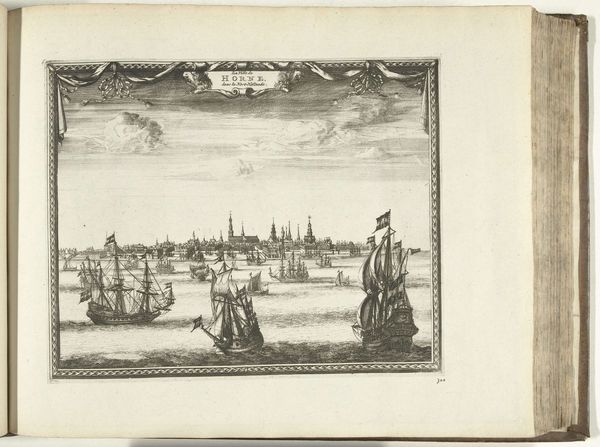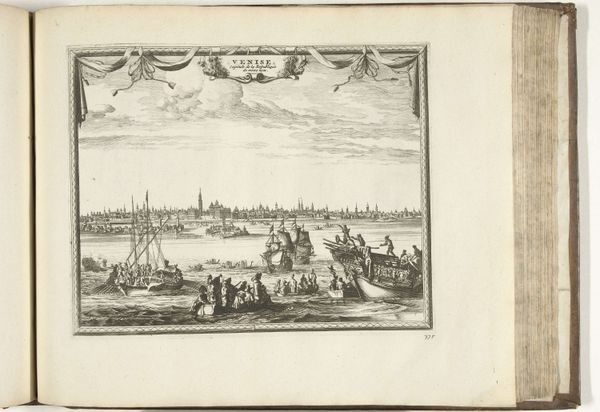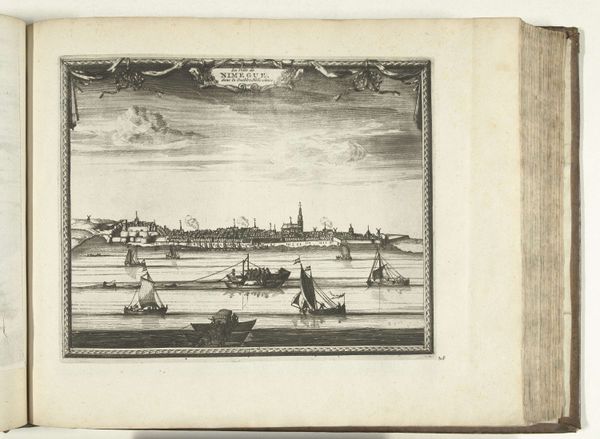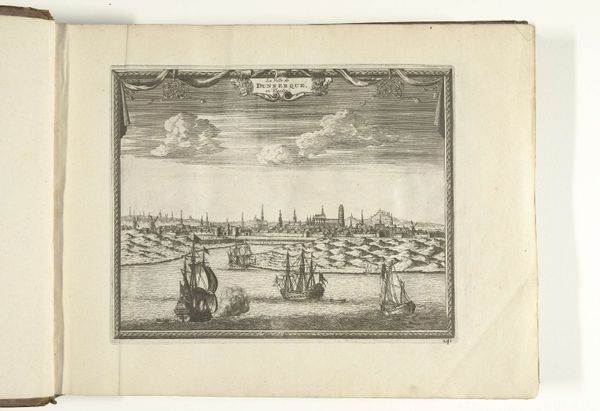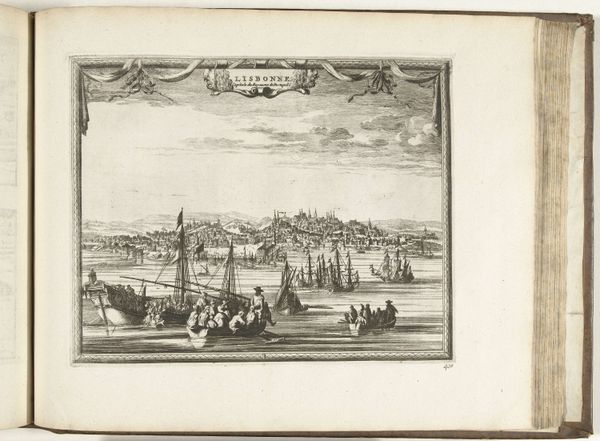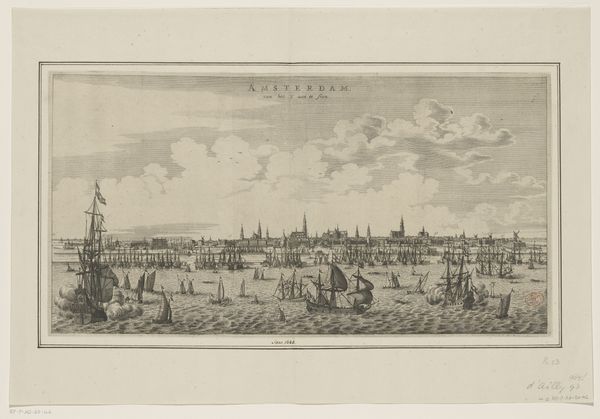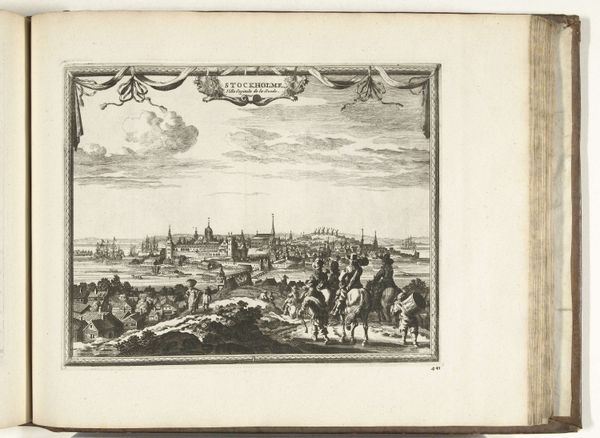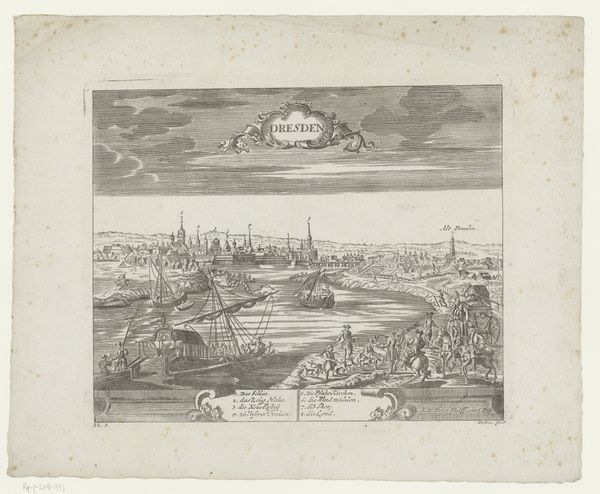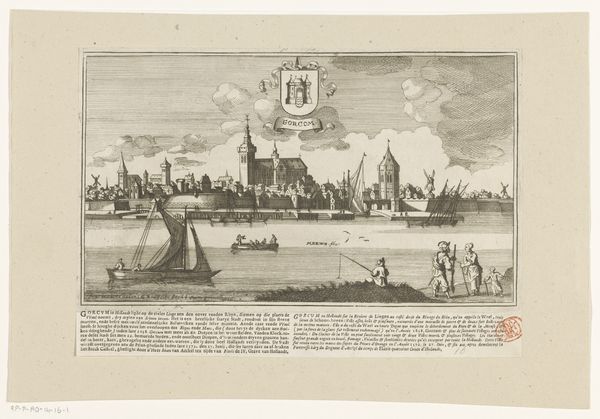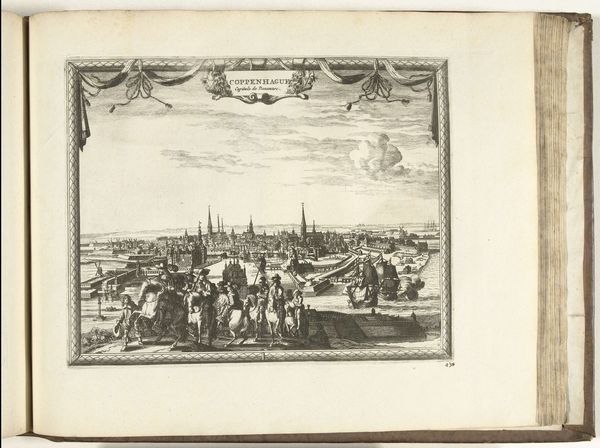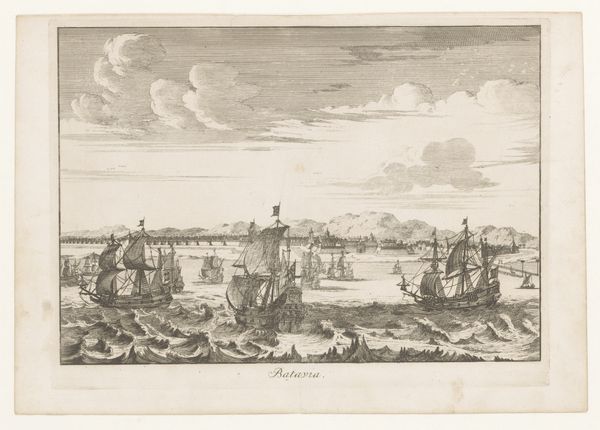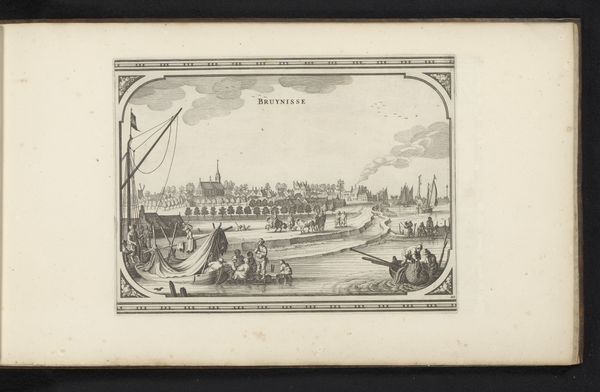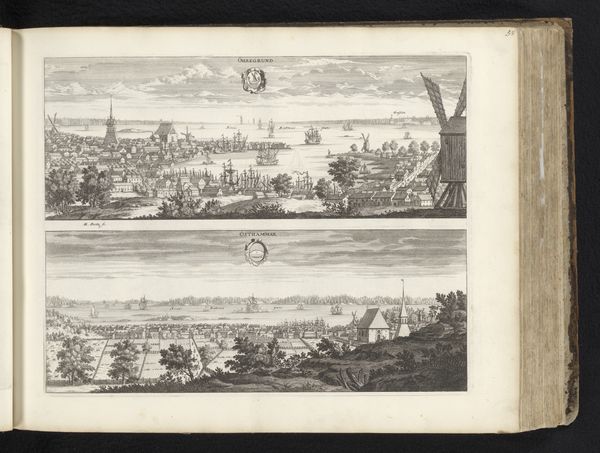
print, engraving
#
dutch-golden-age
# print
#
landscape
#
cityscape
#
engraving
Dimensions: height 223 mm, width 276 mm
Copyright: Rijks Museum: Open Domain
This print of Zutphen was made in 1726 by an anonymous artist, using an engraving technique. Look closely and you can see how the image is built up from tiny lines, etched into a metal plate, which was then inked and pressed onto paper. The material of the print – paper and ink – might seem simple, but it’s important to remember the work involved. The engraver needed great skill to capture the detail of the town, the ships on the water, and even the clouds in the sky. This wasn't just about artistic vision; it was about technical mastery. Prints like this were often made for reproduction and distribution. They were a way of sharing information and ideas, but also of creating a visual record of a place. The print becomes a kind of document, capturing a specific moment in time. So, when we look at this image, we should think not only about the scene it depicts, but also about the labor and skill that went into its creation. This helps us to understand the print as a product of its time, and to appreciate the value of skilled craftsmanship.
Comments
No comments
Be the first to comment and join the conversation on the ultimate creative platform.
